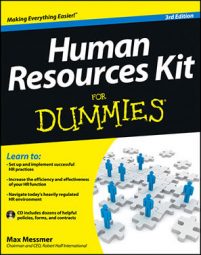Generally, in a nonunion, private work environment, when an employee is laid off, there is no expectation that she will be returning to work. Some companies use the term in a different sense, however.
When business is slow and they don’t need the entire current workforce, some firms (particularly those operating in a unionized environment) notify workers that they’ll be placed on furlough for a period of time and will be offered the opportunity to return to work on a certain date or in stages.
Some companies (especially seasonal businesses and those for which losing a major project creates a significant worker surplus) call this arrangement a “layoff” or “seasonal layoff” even though they plan to bring people back to work if and when conditions allow.
Depending on the nature of the business — and its affiliation with unions or public- versus private-sector obligations — many companies today avoid suggesting that a layoff is temporary because it can be difficult to determine with certainty whether or when employees will be recalled to work. Layoffs (sometimes called reductions in force, position eliminations, restructuring, downsizing, or rightsizing) are far more common when they refer to employee terminations that are final.
One thing that all these approaches have in common, however, is that they’re involuntary and generally are considered to be no fault of the people affected.
How to choose whether employees layoffs are right
Carefully consider whether laying off employees will be effective in achieving your business objectives — whether your goals are to reorganize operations, reduce operations, or eliminate unprofitable business units or lines. When weighing the possibility of layoffs, make sure that the management team is considering more than the bottom-line implications and is thinking about the impact on customers and remaining staff members.
Layoffs may turn out to be inevitable, but management should be aware that the short-term, cost-cutting benefits of layoffs may well be offset by the following factors:
Severance and outplacement costs for the laid-off employees (including accrued vacation and sick pay)
The impact on your company’s future unemployment compensation obligation
The effect on morale and productivity
The impact on future recruiting and new employee training efforts
Knowing the federal and state law
If the number of full-time employees in your company meets or exceeds 100, your layoff strategy needs to consider the federal Worker Adjustment and Retraining Notification (WARN) Act. The WARN Act requires that covered employers give 60 days’ advance written notice of a mass layoff or plant closing.
A mass layoff is a reduction in force that is not a plant closing and that results in employment losses within any 30-day period for 500 or more employees or 50 or more employees if they represent at least 33 percent of the active, full-time employees at that single site of employment.
For this purpose, an employment loss includes a reduction in hours of work of more than 50 percent during each month for six months or more.
Employers covered by the WARN Act don’t have to give 60 days’ advance written notice in the event of smaller layoffs. Beware, though, that multiple, related layoffs occurring within a 90-day period may be aggregated to reach the threshold number required to trigger WARN Act obligations. Also, more than one-third of states have their own WARN-like laws.
Congress has repeatedly considered proposed laws to amend the WARN Act to require, for example, notice farther in advance (for example, 90 days). These matters can be tricky, so consult your legal counsel.
Be prepared to defend the rationale behind your layoff criteria. Be careful, too, that in the process of carrying out this more strategically driven approach, you’re not laying off a disproportionately high number of employees who are in any group protected by equal employment opportunity legislation.

